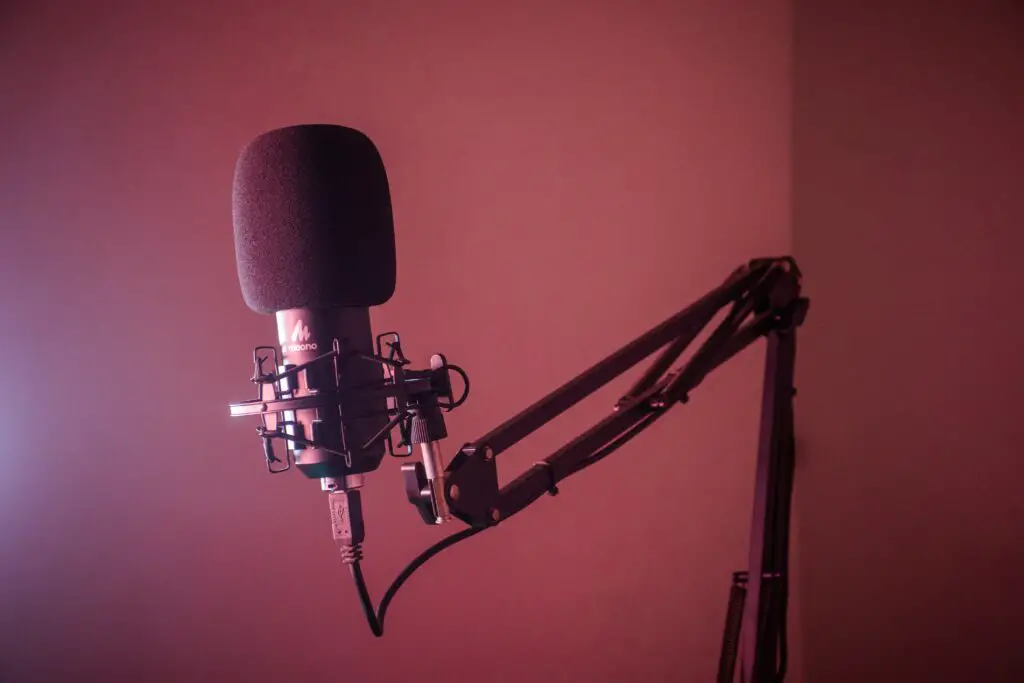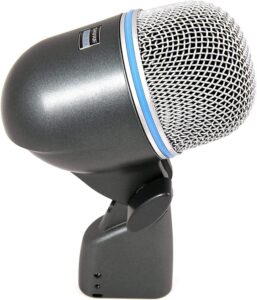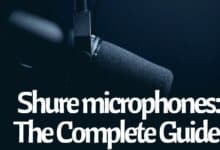If you’re looking to set up a home studio or a small studio office, or maybe, you’re a reviewer who records video reviews, you definitely need a good microphone (mic). There could be other reasons why you may need a microphone.
Yeah, many camera devices – including smartphones – have built-in mic chips, but they can’t record crystal-clear audio, and there are limits to how you can use such built-in mics. So, your options are to get either a condenser or a dynamic mic.
While either of these microphone types would deliver great sound, you have to choose carefully. What’s the difference between condenser and dynamic mics?
Well, the quick difference is the sound processing pattern; the exterior designs of both mics contrast each other, anyway.
In this article, we’d analyze the differences between the condenser and dynamic microphones while also sharing tips on how you can choose one out of the two.
Table of Contents
Condenser Mics

Condenser microphones are quite sleeker than dynamic mics. They are typically the preferred choice for studio recording or in-room recording (for reviewers). Some street interviewers use condenser microphones too.
This type of mic is designed for optimal performance with a backplate made of solid brass and a precisely drilled hole pattern for consistent sound.
Condenser mics have a low-mass diaphragm, so they have a superior transient response.
The Best Condenser Mics In The Market To Buy
- HyperX SoloCast – USB Condenser Gaming Microphone
- Audio-Technica AT2020 Cardioid Condenser Studio XLR Microphone
- Neumann TLM-193 Cardioid Condenser Microphone
- Audio-Technica Condenser Microphone
- Sennheiser Pro EW 100-845S Wireless Condenser Supercardioid Microphone
- Audio-Technica AT4047MP Cardioid Condenser Microphone
- Neumann KM184 MT Miniature Condenser Cardioid Mic
- Rode NT1-A-MP Stereo Cardioid Condenser Microphones
- Beyerdynamic MC930 Small Diaphragm True Condenser Cardioid Mic
How Does This Type Of Mic Work?
Condenser mics are designed in accordance with the principle of variable capacitance – battery-based.

When sound is sent into condenser mics, the sound waves vibrate the diaphragm – which has a magnetic plate behind it – to create a voltage boost sent through a phantom power supply to increase the waves’ strength before sending it out of the mic to the connected system(s) or device(s).
Some condenser mics may work slightly differently than this explanation.
Dynamic Mics

If you’re going to address a large audience – maybe a concert or stuff like that – dynamic microphones are the best for such events.
Dynamic mics are mainly used in/for loud environments, but of course, they can also be used for recording vocals in studios or for home video reviews.
Dynamic microphones can take any beating and can be used in any weather condition. They also handle heat and humidity pretty well than other types of microphones.
This type of mic handles high volumes without distortion; generally, dynamic mics are a decent option for general vocals, where much precision and smooth reproduction aren’t so much needed.
The Best Dynamic Mics In The Market To Buy
- Sennheiser Professional MD 441-U Dynamic Super-Cardioid Microphone
- Shure Super 55 Deluxe Vintage Supercardioid Dynamic Unidyne Mic
- Sennheiser Pro E 945 Dynamic Super-Cardioid Vocal Microphone
- Electro-Voice ND86 Dynamic Supercardioid Mic
- Shure SM7B Vocal Dynamic Microphone
- Shure BETA 52A Kick Drum Supercardioid Dynamic Mic
How Does This Type Of Mic Work?
Dynamic microphones receive sound waves and turn them into voltage signals using a magnet. They practically work in the reverse of how speakers work.

While speakers use electrical signals to vibrate the diaphragm to create sound waves, dynamic microphones use sound waves to vibrate the diaphragm and create an electrically-charged field before the sound is sent to the output device/system.
What’s The Difference Between Condenser and Dynamic Mics?
| Mic | Condenser | Dynamic |
| Purpose | Studio, ambiance, acoustic | Loud vocals, studio, live events |
| Power Source | Battery | Plug and play |
| Loudness | Medium | High |
| Clarity/Less Distortion | Low distortion | Distortion may be high |
Talking of the difference between condenser and dynamic mics, the simple answer is application. Each of these microphone types is built for some specific applications.
The dynamic mic is particularly built for loud vocals, making it the ideal option for live videos – where the environment is typically loud.
Dynamic microphones can handle high signals and can be used in any environment. But condenser mics are designed for use in “reserved” environments because they can’t really perform well in a very loud environment.
You’d find condenser mics mostly used in studios for recording songs/vocals. Some radio/TV presenters also use condenser mics inside their studios.
Coming to the diaphragm, condenser mics have low-mass diaphragms, which makes them capable of producing cleaner, higher-quality sound than dynamic mics.
Also, condenser mics can deliver perfectly well at higher frequencies, thanks to their high sensitivity. On the other hand, dynamic mics are not as sensitive as condenser ones, but they produce good-quality sounds.
Another notable difference between these two types of mics is the “polar patterns.” Dynamic microphones typically feature a cardioid or super-cardioid polar pattern, while condenser microphones are constructed with no particular type of polar pattern.
Furthermore, dynamic mics pick up sound waves and convert them to electrical signals using a diaphragm, voice coil, and magnet; condenser mics use an electrically-charged diaphragm to create electrical signals proportional to the sound waves.
Although they differ in a few aspects, it is better to get both a condenser mic and a dynamic mic and use them when necessary.
Both microphone types can be used interchangeably with the right set of audio equipment setup and depending on the environment.
A $600 budget can get you a decent condenser and dynamic microphones.
Keynote Differences
- Condenser microphones use variable capacitance transducers
- Dynamic microphones are not as sensitive as condenser mics; the user needs to come closer for a dynamic mic to perfectly capture the vocals or waves.
- Condenser mics are used in quieter environments, while dynamic mics are used in louder environments.
- Dynamic microphones produce simple and good raw sounds than condenser alternatives.
- Condenser mics are made with more delicate and fragile components, so they should be handled with greater care. Dynamic microphones are sturdier, but notwithstanding, they also should be handled with great care.
Frequently Asked Questions
Which Is Better, Condenser Or Dynamic Mic?
The better one depends on the environment and purpose; a condenser mic might be the better option depending on your need – a dynamic mic may also be the right option. It all depends.
Do Singers Use Dynamic Or Condenser Mics?
For recordings inside the studio, singers typically use condenser mics; in live events and loud environments, they use dynamic mics.
Do Condenser Mics Sound Better?
Condenser mics are simply more sensitive and support higher frequencies response than dynamic mics; they are a better option for recording quality.
What More?
The final conclusion on choosing between condenser mics and dynamics depends on the user preferences and purpose.
These microphones can be used interchangeably in most cases, but since they are built differently, each one has some specific environments where it functions best.
Both condenser and dynamic mics can be fine-tuned in different ways to deliver specific performance and clarity.




